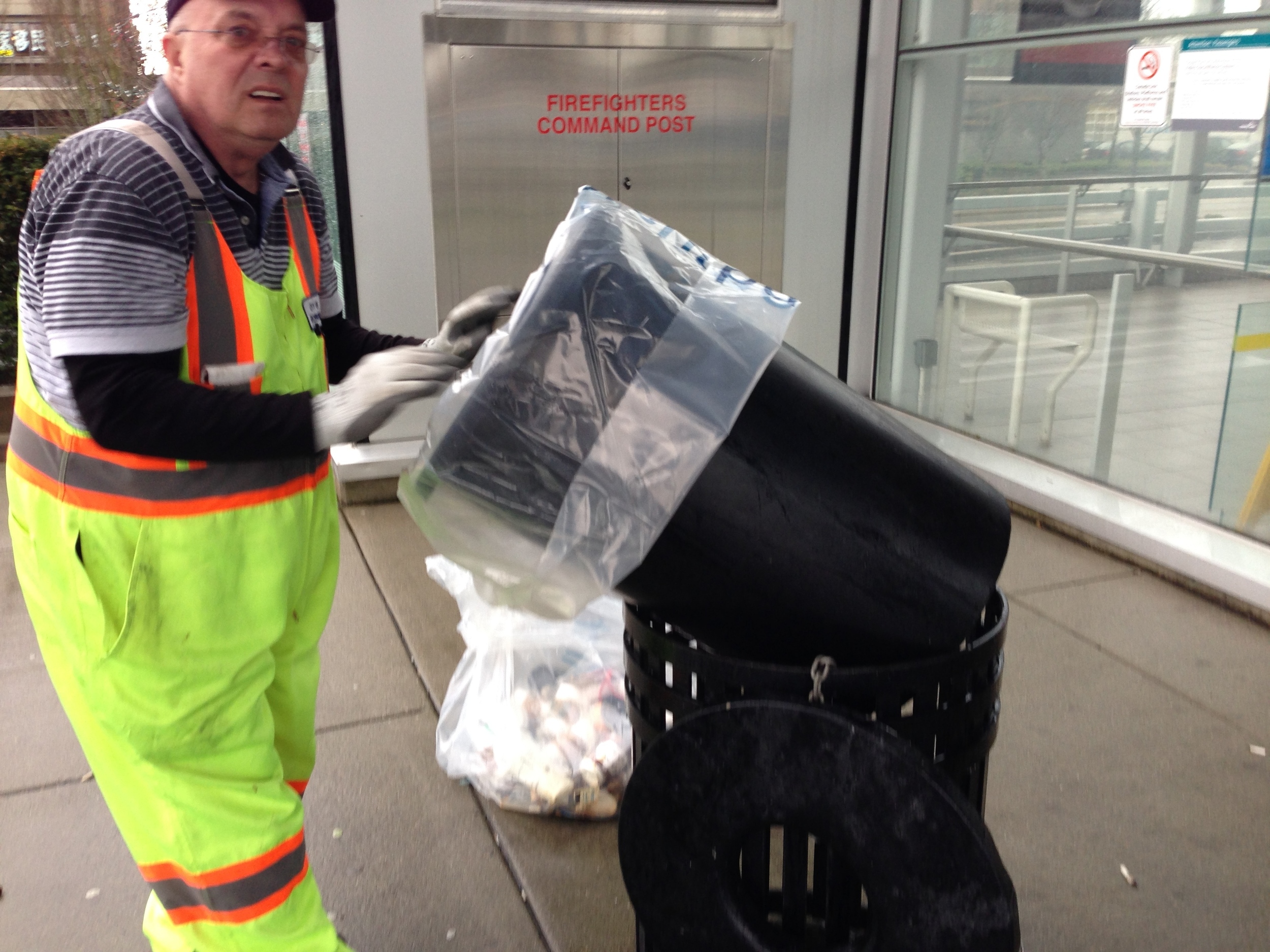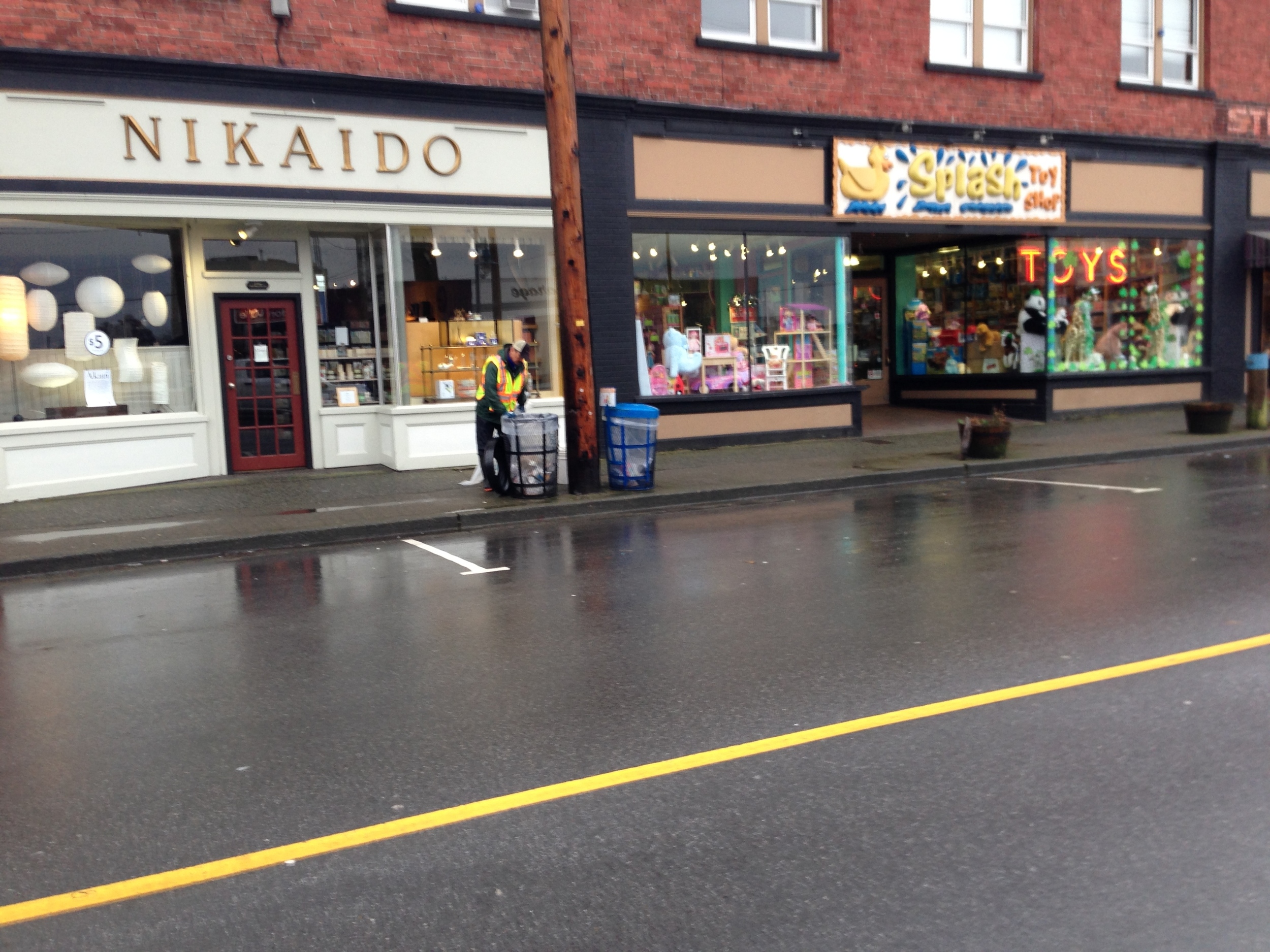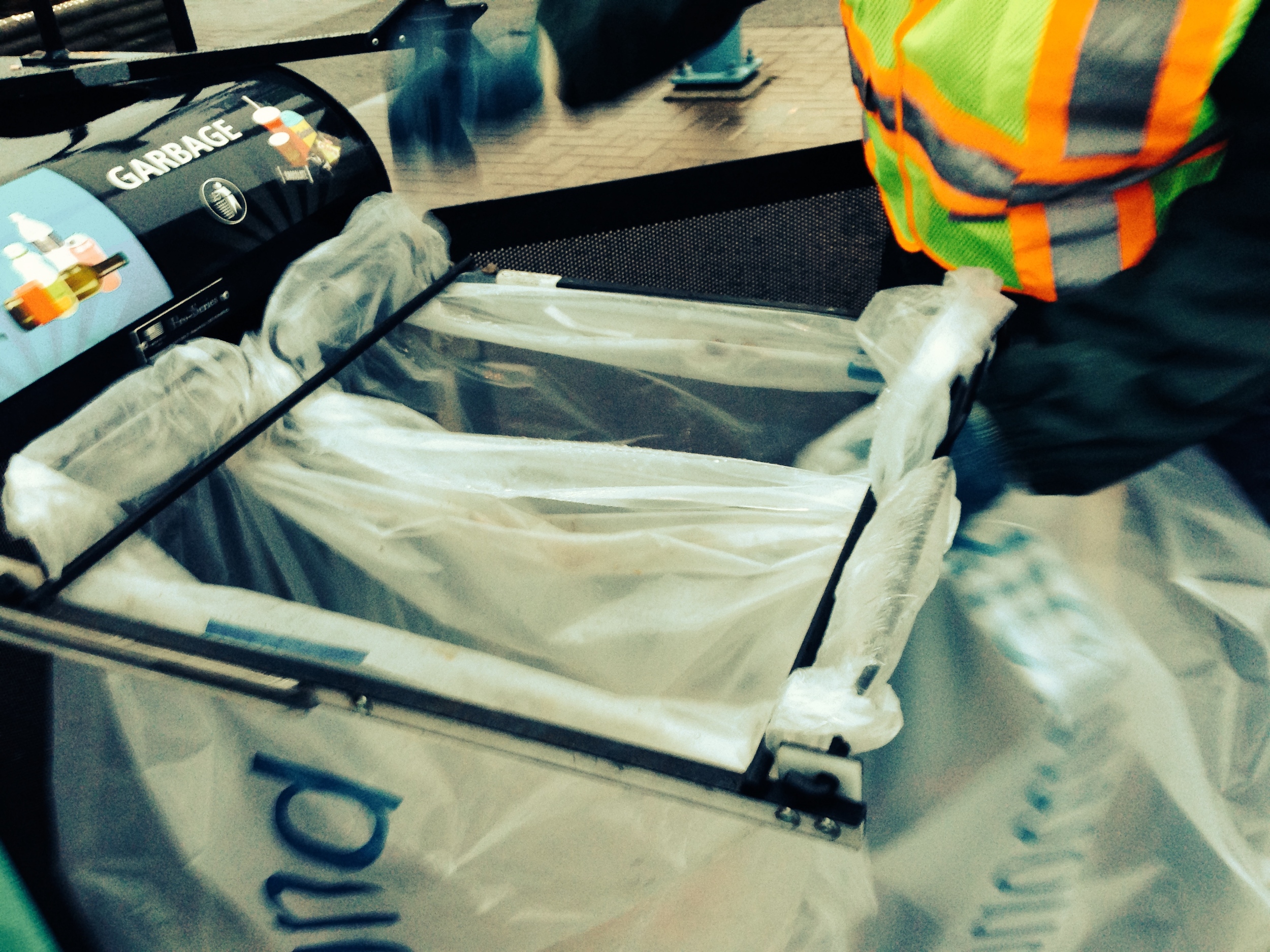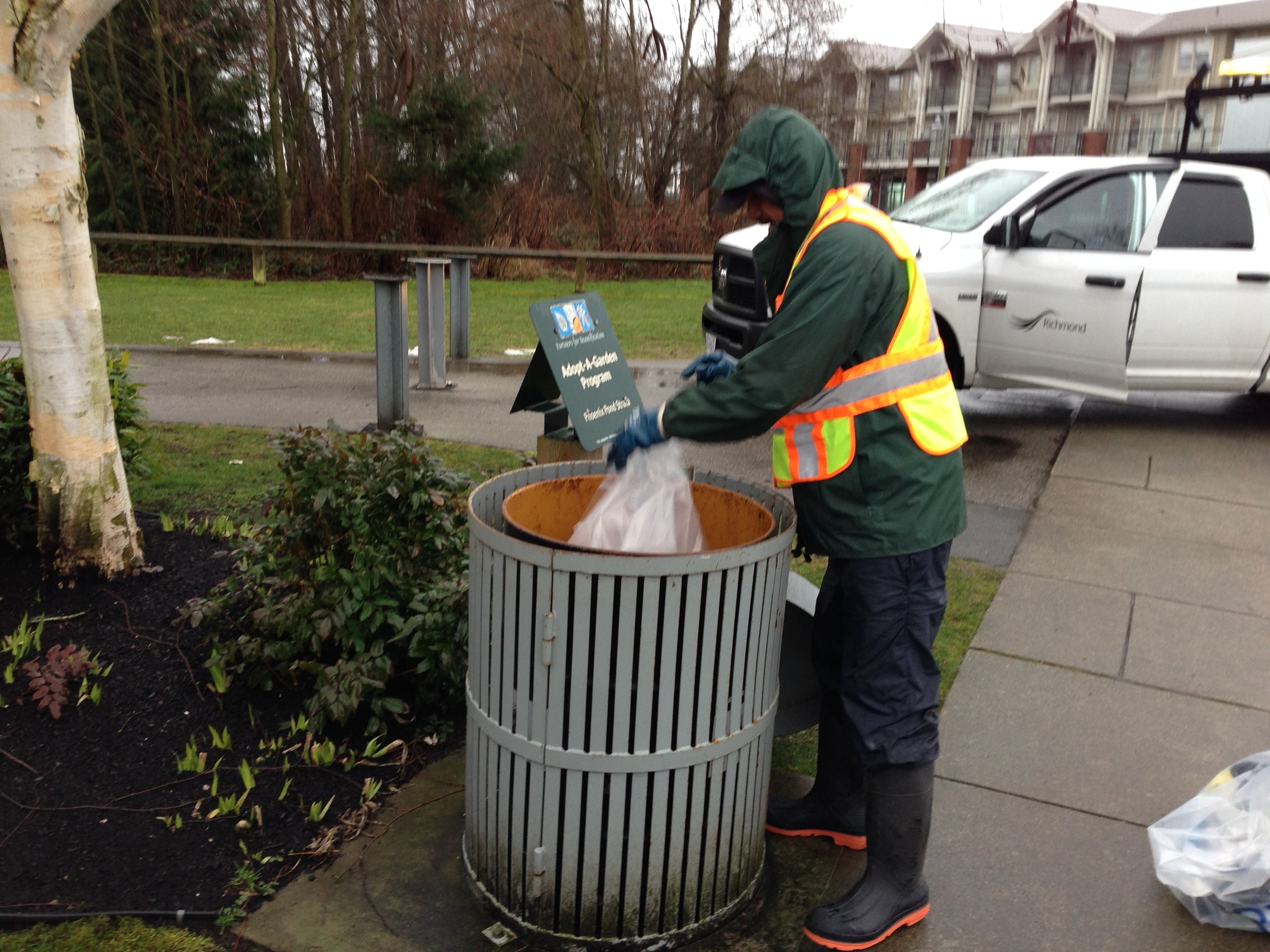Citizen Centred Services
MASTERS THESIS part 2: research
About
Through a reflective process that involves a real world project, I examine how various human centered methodologies work in a municipal government context. The analysis of the effectiveness of these methods are used to create a framework for approaching human centered design problems facing city governments.
#Ethnographic Research
#Participatory Workshop
#Usability Testing
#Surveys
@ Emily Carr University
Masters Thesis Download
Thesis Structure
Problem Statement
Municipal governments struggle to implement services that support ecologically sustainable behaviour patterns.
Thesis Statement
How might participatory design methods be utilized to increase the success of government services designed to support sustainable behaviours?
Design objectives
Through a case study that designs a touchpoint for public space recycling, I aim to show how human centred design can be used to encourage behaviour change.
Research Methodology
I approach my research by dividing my methodologies into two sections, the frontstage and the backstage. The Frontstage looks at the different ways that I engage with citizens through observations, surveys and a co-creation session. The Backstage examines the primary research that I conduct with the service workers and waste
coordinators in the participating municipalities through workshops and an ethnographic ride along. These methods give direct insight into the needs and wants of the stakeholders involved. The insights I gather from my research inform not only the design, but the design process moving forward.
Participatory workshop
5 whys exercise
5 whys exercise I conducted a brief brainstorming session in order to get descriptive words of what it is currently like for participants to attempt to recycle objects in public spaces. Based on the brainstorm exercise, we used the words generated to fill in the blank on the following sentence:
At this phase in my research I am looking to gain insights into the citizen’s experience in recycling though different research methods. During this co-creation session I had the opportunity to do the 5 whys exercise with groups of 4-5 participants at a time, with a total of 25. In order to formulate the question, I want to base it off the participant’s current problems with recycling. Directly before the
This exercise highlights the idea that citizens are lacking a basic background knowledge on recycling, that would help them make decisions when attempting to recycle. This type of learning shouldn’t occur at the recycling station. Rather it should be available as a resource somewhere else to engage in deeper learning.
Participatory workshop
Card sorting
The exercise is broken into two parts. Part one asks the participant to sort images of garbage into categories that are icons only. Part two has the participant sort icons that represent items of garbage into categories that are word only. My goal with the design of the exercise is to explore how different modes of communication (words, icons, and images) helped or impede sorting properly.
When participants matched an object to an icon, it became limited to the category . This is because the icon represents one object from a whole range and it is easier for the user to think it is limited to just what the icon represents. An example of this is the container stream, which is represented by a coffee cup icon. Users placed items similar to cups, but didn’t add other items like a plastic fork.
With the word category, the word represents a wide range of objects within that category and people are able to identify objects that fit in that category better. An example of this is the ‘mixed paper’ category that as an icon was shown as a magazine, which to the participants is limiting. When written out as ‘mixed paper’ they know they could put a lot more items in that match the written description.
Backstage Methodologies
The Service Worker
The backstage of a service considers all the behind the scenes functions that allow a service to take place. Municipalities provide recycling as a service to its citizens in their households as well as public spaces. In order for that service to function, the city creates recycling touch points in peoples’ homes and on the streets that are
maintained by servicemen employed by the city. The material streams are collected from all over the city, and brought to different facilities to be processed or shipped offshore for processing into new materials.
Design Ethnography
Ride along with waste haulers
I had the opportunity to work closely with employees of several municipalities in the region through my research partnership with Metro Vancouver. I decided to participate in a ride along with the recycling waste haulers in the city of Richmond, British Columbia in
order to gain deep insights into their routine. My methodology can be described as design ethnography which is an immersive method for designers to observe and understand a stakeholder’s experience.
I observed two of the sanitation workers routes in two different neighbourhoods in Richmond. One route was in what is considered the downtown part of the city, and the other was a along a mass transit route. Their job includes driving to each public space recycling and garbage receptacle in the city to empty and maintain them. My research process included photo documentation of their different tasks acting as a ‘fly on the wall’. When there was down time while driving in-between pick-ups I could ask questions about their routine. This process was iterative, the more observations I made, the more questions I could ask. As soon as we started talking, the workers were eager to tell me all the problems and inefficiencies they have in their
routine. This provided great insight for my research as their year of experience were translated into precise friction points. Lastly, I took notes throughout my ride-along of things that I couldn’t take a photograph of, and that didn’t come from talking to the workers. This included contradictions in what the workers said, and what they actually did.
The research from the ride alongshows three main observations that I am showcasing in this section. They include the visibility of the garbage levels, the durability of the physical form and how much waste each station can hold.
Visibility
While driving towards the next pick-up location, the sanitation worker was quick to point out set of bins pictured below (see fig. 3.1.15) The wall of the bins are made from an expanded mesh steel. This is particularly advantageous because they allow the worker to see from a distance how full each bin is and whether or not it needs to be emptied. This saves the worker time from not having to park, get out of the truck and check the bin levels only to find outthat it doesn’t need servicing.
Durability
One of my observations that didn’t come from interviewing or photographs was how the workers physically treated the equipment they are using. I observed that the workers are in a hurry to make sure they get their route covered in time. This means they are working very quickly in all of their movements.
Capacity
As my observations continued a recurring complaint came from the sanitation workers was that the capacity of current recycling stations is too small. In contrast to this point, once we went to empty the largest capacity container, a 55 gallon steel drum (see fig. 3.1.17), the worker said that it is ‘the back-breaker’ because it is so heavy to lift when full.
Usability Testing
IN STUDIO AND IN CONTEXT
Testing the front end user experience is done with both qualitative andquantitative methods. Testing prototypes in context in different municipalities in the region leverages my research partnership with Metro-Vancouver by. By placing prototype recycling stations in public spaces I quantitatively measure how effective the prototypes are at diverting recycling streams correctly. The results inform the next iterations of the design. The testing in context happens in two phases with two subsequent prototypes.
Qualitative testing is conducted with participants in a studio context with a prototype of the second major iteration of the bin design. This
exercise is directed towards understanding the user’s experience for the recycling station and how participants think through the process of recycling. Combining both quantitative and qualitative methods for testing the citizen facing aspects of the design creates greater understanding of how effective the design is at diverting waste correctly.
A full scale prototype was brought to service workers in two different municipalities to get feedback on the design and components that related to their needs.
In Studio User Testing
Think out loud exercise
This exercise asks participants to interact with a working prototype. It is an interactive form of user testing in which the participant is given an item that needs to be recycled at the station. They are asked to ‘think out loud’ while performing the task . They are told to take their time and analyze what is going through their mind while attempting
the task at hand. The activity is filmed, so that I can watch the footage afterwards to see user’s body language and to listen to what they say during the exercise. After the exercise, I come out to the station and have a reflective conversation about what the participant said, or didn’t say.
The main concept of the user being able to see the larger icons from a distance on the angled tops of the containers was verified with participants throughout the activity. It is apparent that they are able to begin processing and making their decision from far away. Users attested to the need to see all of the options in the station before they made their decisions of where to place an item. This is made easier by the perspective and size of icons. This approach acts as both an opportunity to test the prototype, as well as a way to generate insights to further iterate the design.
In Context User Testing
Quantitative data
The recycling station was installed for one week full-time (24 hours a day) in three different local municipalities. The station was emptied regularly and the contents of each stream were counted to determine the accuracy and how effective the station was in that location. Each
municipality that participated helped in co-ordinating a suitable location to do the testing. Locations were chosen that had the highest pedestrian traffic in order to get the most use of the station and therefore the most results.
After the week long testing in three municipalities the contamination results proved promising. The average accuracy between all three test installations was 83%. Precedent recycling stations that have been used in the region have such bad contamination rates (some reporting around 50%) that all of their streams are thrown in the landfill as a standard practice. The garbage stream is not counted in the accuracy percentage as the goal is to keep the recycling streams as clean as possible.
See full Thesis document here















